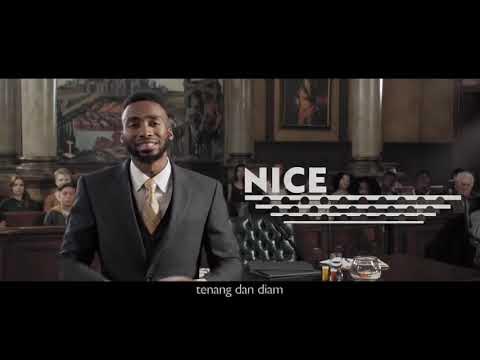I SUED THE SCHOOL SYSTEM (2024)
Summary
TLDRIn this impassioned speech, the speaker accuses modern schooling of being outdated and detrimental to students' creativity and individuality. They argue that schools, originally designed for industrial-era workforce training, are still using one-size-fits-all teaching methods that fail to recognize and nurture the diverse talents and dreams of students. The speaker calls for a revolution in education, advocating for personalized learning, higher teacher salaries, and a focus on collaboration over competition. They highlight alternative educational models, such as those in Finland and Montessori programs, as examples of successful innovation and conclude by emphasizing the importance of education in shaping our future.
Takeaways
- 🎓 The script criticizes modern schooling for being outdated and not evolving with the times, likening it to the unchanged classroom setup from 150 years ago.
- 🐟 It uses the metaphor of a fish climbing a tree to illustrate the folly of judging individuals by a single standard, which can lead to a lifetime of self-doubt and unfulfilled potential.
- 🤖 The speaker accuses the education system of turning students into 'robots' by promoting conformity and standardization, rather than nurturing creativity and individuality.
- 🏭 The script points out that the current educational model was designed for an industrial era, preparing students for factory-like environments rather than the diverse needs of today's world.
- 📚 The speaker argues that the 'one-size-fits-all' approach to education is detrimental, as it fails to recognize and cater to the unique abilities and interests of each student.
- 💰 The script highlights the underpayment of teachers, suggesting that their role is as crucial as doctors and should be compensated accordingly for the profound impact they have on students' lives.
- 👨🏫 It criticizes the system that leaves teachers with limited options and autonomy, while curriculums are often dictated by policymakers with little to no teaching experience.
- 📊 The speaker condemns standardized testing as an inadequate measure of success, citing its inventor's own words against its continued use.
- 🌍 The script advocates for a customized approach to education, drawing parallels to how personalized services are provided in healthcare, technology, and other industries.
- 🎨 It calls for a balanced重视 of all subjects, not just math, but also arts and dance, emphasizing the importance of nurturing every student's talents.
- 🏆 The speaker points to examples like Finland and Singapore as models of educational success, where shorter school days, well-paid teachers, and a focus on collaboration over competition have led to outstanding results.
- 🚀 The script concludes with a call to action, emphasizing that students represent our future and that it is our collective responsibility to attend to their dreams and aspirations.
Q & A
What is the central argument presented in the script?
-The central argument is a critique of the modern educational system, accusing it of being outdated, stifling creativity and individuality, and preparing students for the past rather than the future.
What analogy is used to describe the limitations of the current educational system?
-The analogy of a fish being judged by its ability to climb a tree is used to illustrate the system's failure to recognize and nurture diverse talents and abilities.
How does the script suggest that modern-day schooling is similar to factory training from the past?
-The script suggests that modern schooling is similar to factory training by organizing students in rows, expecting them to sit still, follow orders, and compete for grades, which were characteristics of industrial-era education designed for a factory workforce.
What evidence does the script provide to argue that classrooms have not evolved significantly over the past 150 years?
-The script contrasts images of modern technology like phones and cars with images of classrooms from today and 150 years ago, highlighting the lack of change in the educational environment.
What is the script's view on the purpose of the original educational system?
-The script posits that the original educational system was designed to train people to work in factories, emphasizing conformity and rote learning rather than creativity and critical thinking.
How does the script characterize the 'one-size-fits-all' approach to education?
-The script criticizes the 'one-size-fits-all' approach as educational malpractice, likening it to a doctor prescribing the same medicine to all patients, which would be ineffective and potentially harmful.
What issue does the script raise regarding the treatment of teachers within the educational system?
-The script raises the issue of teachers being underpaid and undervalued, despite having one of the most important jobs, and suggests that they should be compensated similarly to doctors.
What historical figure is mentioned in the script, and what is their connection to standardized testing?
-Frederick J. Kelley is mentioned as the inventor of standardized testing, and the script quotes him as hoping that these tests would be too crude to use and should be abandoned.
What alternative educational models does the script mention as examples of success?
-The script mentions the educational systems of Finland, Singapore, Montessori programs, and Khan Academy as examples of successful alternatives that focus on collaboration, teacher wages, and individualized learning.
What is the script's final call to action regarding education?
-The script calls for a customized approach to education that reaches the core of every student's heart, emphasizing the importance of nurturing every gift and talent, and moving away from a one-size-fits-all model.
What does the script suggest about the potential impact of not reforming the educational system?
-The script suggests that if the educational system does not reform, the results could be lethal to the potential of students and to the future, as it would continue to stifle creativity, individuality, and the development of critical thinking skills.
Outlines

此内容仅限付费用户访问。 请升级后访问。
立即升级Mindmap

此内容仅限付费用户访问。 请升级后访问。
立即升级Keywords

此内容仅限付费用户访问。 请升级后访问。
立即升级Highlights

此内容仅限付费用户访问。 请升级后访问。
立即升级Transcripts

此内容仅限付费用户访问。 请升级后访问。
立即升级5.0 / 5 (0 votes)






